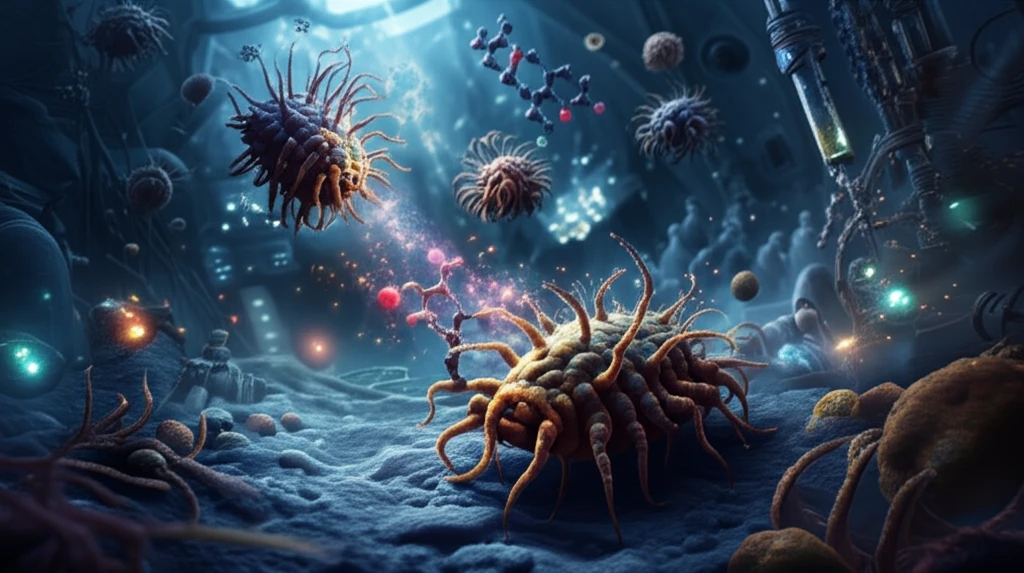
Unlock the Power of Enaminones: New Hope in the Fight Against Superbugs?
"Discover how a common lab reagent could lead to breakthroughs in antifungal and antibacterial treatments, offering new solutions to combat resistant infections."
In an era where antibiotic resistance looms large, the quest for innovative therapeutic agents is more critical than ever. Traditional antibiotics are losing their effectiveness against increasingly resistant strains of bacteria and fungi, leading scientists to explore new chemical pathways and compounds that can overcome these defenses. One promising area of research focuses on the synthesis and application of enaminones, a class of organic compounds with significant potential in medicinal chemistry.
Enaminones are not new to the scientific community; they have long been recognized as versatile building blocks in organic synthesis. However, recent advancements in catalysis and methodologies have expanded their utility, particularly in creating complex heterocyclic molecules with enhanced biological activities. Among the catalysts drawing attention is N, N-Dimethylformamide dimethyl acetal (DMFDMA), a reagent capable of transforming simple chemical structures into valuable therapeutic candidates.
A recent study has harnessed the power of DMFDMA to synthesize novel enaminone derivatives, specifically focusing on 3,4-dihydro-9-arylacridin-1(2H)-ones. These compounds have been evaluated for their in-vitro antifungal, antibacterial, and antioxidant properties, revealing a potential pathway for developing new treatments against resistant microbial infections. This article will delve into the findings of this study, exploring the synthesis process, the biological activities of the compounds, and the implications for future medical applications.
DMFDMA: A Catalyst for Novel Antimicrobials

The study begins with the synthesis of 3,4-dihydro-9-arylacridin-1(2H)-ones, a class of compounds known for their potential biological activities. The researchers introduced an enaminone function at the C-2 position using DMFDMA as a catalyst. This catalytic conversion is crucial as it allows for further structural modifications, transforming the initial compounds into pyrazole, isoxazol, and 1-phenyl-1H-pyrazole derivatives through reactions with reagents like hydrazine, hydroxylamine, and phenylhydrazine.
- Culturing bacterial and fungal strains under specific conditions.
- Exposing the pathogens to different concentrations of the synthesized compounds.
- Measuring the minimum inhibitory concentration (MIC), the lowest concentration at which the compound inhibits growth.
- Comparing the results against standard antibiotics and antifungals.
Future Implications and the Road Ahead
This research underscores the potential of DMFDMA-catalyzed reactions in synthesizing novel antimicrobial agents. The compounds developed in this study offer a promising starting point for future drug development, particularly in combating resistant fungal and bacterial infections. Further studies, including in-vivo testing and toxicity assessments, are essential to translate these findings into clinical applications. As superbugs continue to evolve, innovative approaches like this provide a beacon of hope in the ongoing battle against microbial resistance.
